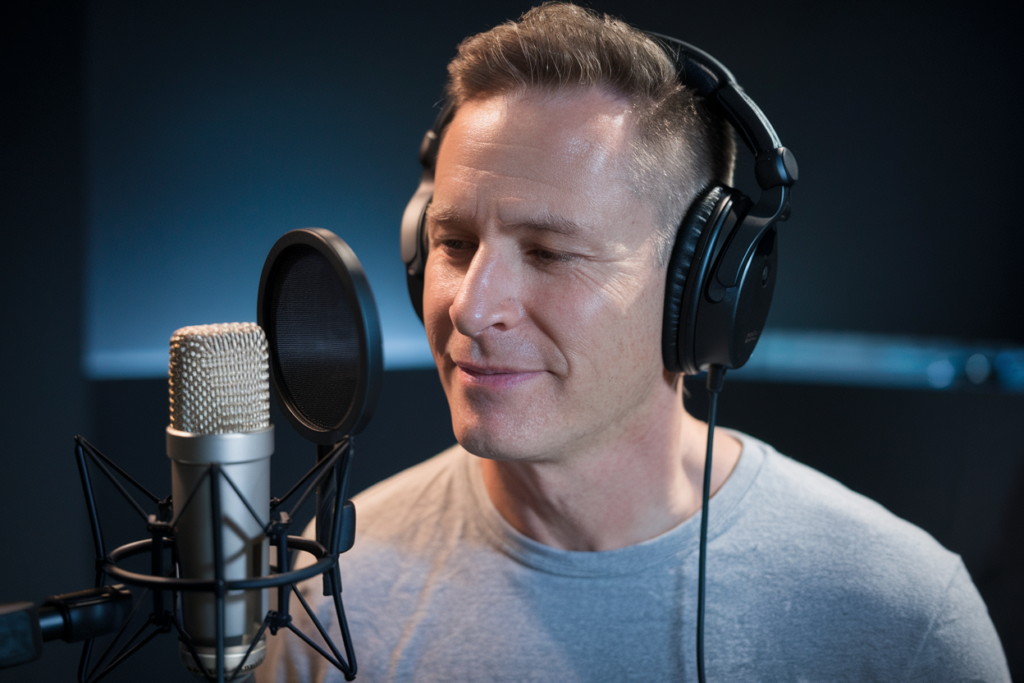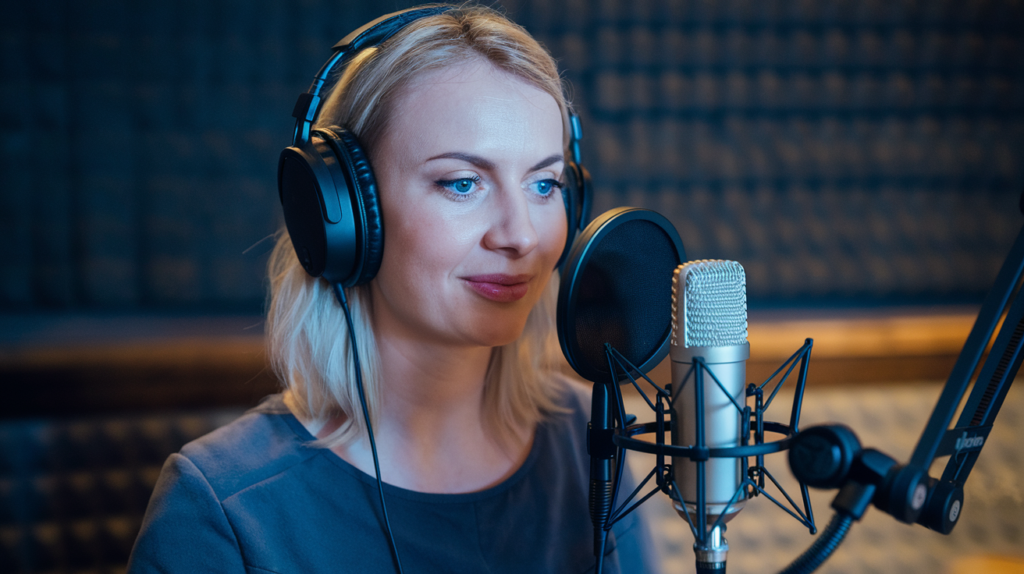Key Takeaways
- Seamless Lip Sync is Essential: Accurate lip sync enhances viewer immersion and emotional connection, making it vital for high-quality Polish dubbing.
- Cultural Relevance Matters: Adapting scripts to reflect Polish cultural nuances ensures that humor and emotions resonate with local audiences.
- Skilled Voice Talent is Key: Selecting proficient voice actors who understand regional accents and dialects adds depth to characters and authenticity to performances.
- Collaboration Enhances Quality: Effective communication among directors, translators, and voice artists fosters creativity and results in a polished final product.
- Utilize the Right Tools: Employing professional dubbing software like Adobe Audition or Avid Pro Tools can significantly improve synchronization and overall audio quality.
- Address Challenges Proactively: Understanding cultural nuances and language specifics allows for smoother adaptations, ensuring a more engaging viewing experience.
Ever wondered how to make your Polish dubbing sound seamless and natural? When it comes to lip sync, getting the timing just right can be a game-changer. You want your audience to feel like they’re experiencing the original performance, not just reading subtitles.
Overview of Polish Dubbing
Polish dubbing plays a crucial role in enhancing the viewing experience for audiences. Achieving natural-sounding dialogue requires skilled voice actors who can match their performances to the original content’s emotional tone and pacing. This process goes beyond mere translation; it involves adapting scripts to fit the nuances of Polish culture while ensuring that the voiceover aligns perfectly with on-screen actions.
Timing is everything in dubbing. Precise lip sync timing ensures that spoken words coincide seamlessly with character movements, creating a believable experience for viewers. When executed well, dubbing can make you forget you’re watching a translated version, allowing you to immerse yourself fully in the story.
Selecting top-notch voice talent is essential. Voice artists must possess not only acting skills but also an understanding of various accents and regional dialects within Poland. This diversity adds depth to characters and helps convey their personalities authentically.
Additionally, collaboration between directors, translators, and voice actors shapes the final product significantly. Clear communication among these parties fosters an environment where creativity thrives, resulting in high-quality dubbed content that resonates with audiences.
Mastering Polish dubbing hinges on skilled professionals who prioritize lip sync accuracy and cultural relevance while working together harmoniously throughout the production process.
Importance of Lip Sync
Achieving precise lip sync is crucial in Polish dubbing. This aspect significantly impacts how audiences perceive and connect with the content.
What is Lip Sync?
Lip sync refers to the synchronization of spoken dialogue with the visual movements of a character’s lips. In dubbing, you want voice actors to match their performances closely with what’s happening on screen. Watching a film or show feels off when there’s a noticeable disconnect between the audio and visuals. By ensuring that voice talent aligns their speech patterns and emotions with the original performance, you create an immersive experience for viewers.
Benefits of Accurate Lip Sync
Accurate lip sync offers numerous benefits:
- Enhanced Viewer Experience: When dialogue matches mouth movements, it enhances immersion, allowing viewers to focus on the story rather than noticing discrepancies.
- Emotional Connection: Well-synced performances convey emotions effectively, making characters feel more relatable and authentic.
- Cultural Relevance: Voice artists adapt scripts while considering cultural nuances, which can resonate better with Polish audiences.
- Professionalism: High-quality dubbing reflects professionalism in production values, leading to greater audience trust in your content.
- Broader Reach: Engaging dubbing attracts diverse audiences who prefer localized versions over subtitles, increasing potential viewer numbers.
Investing in accurate lip sync not only improves quality but also strengthens connection with your audience through engaging storytelling.
Techniques for Effective Lip Sync
Effective lip sync requires attention to detail and an understanding of timing. Mastering these techniques enhances the overall quality of your Polish dubbing.
Timing and Rhythm
Timing is crucial in dubbing. You need to ensure that the spoken words match the character’s lip movements precisely. This synchronization creates a natural flow, making it feel like the voice actor’s performance is part of the original content rather than an overlay. Focus on pacing; short, snappy dialogues require quicker delivery, while longer sentences allow for a more relaxed rhythm. A well-timed voiceover not only improves immersion but also maintains audience engagement throughout the viewing experience.
Phonetic Matching
Phonetic matching plays a significant role in achieving seamless lip sync. As you adapt scripts for Polish audiences, consider how each word aligns with mouth movements in the original language. Some sounds may not have direct equivalents in Polish, so selecting words that closely resemble those phonetic shapes ensures better alignment while preserving meaning. Collaborating with skilled voice actors who understand these nuances can enhance this process significantly; their expertise allows for creative solutions that keep dialogue authentic while maintaining visual harmony.
By implementing precise timing and effective phonetic matching techniques, you’ll create compelling Polish dubbing that resonates with viewers and elevates their overall experience.
Tools and Software for Dubbers
Choosing the right tools and software is crucial for achieving high-quality Polish dubbing. These resources enhance your ability to synchronize voiceovers with character lip movements, ensuring a seamless viewing experience.
Popular Dubbing Software
- Adobe Audition: This professional audio editing software offers robust features for recording and mixing voice talent. Its multi-track capabilities allow you to align multiple audio layers effectively.
- Avid Pro Tools: Widely used in the industry, Pro Tools provides advanced editing options that cater to complex dubbing projects. Its high-quality sound processing ensures clarity in every voiceover.
- Reaper: An affordable alternative, Reaper supports various plugins and has an intuitive interface. It’s great for independent dubbers looking to create professional-sounding tracks without breaking the bank.
- Final Cut Pro X: Although primarily a video editing tool, its audio capabilities also make it suitable for dubbing workflows, especially when integrating voiceovers directly into video projects.
- Camtasia: This user-friendly option is perfect for beginners or those focusing on e-learning content. Camtasia allows easy synchronization of voiceovers with visuals while providing basic editing functions.
Features to Look For
- Multi-Track Editing: Ensure the software supports multiple tracks so you can layer different voices easily, helping maintain clarity in dialogue during complex scenes.
- Time Stretching and Pitch Shifting: Look for features that allow adjustments without affecting quality; this helps match your performance with character movements more accurately.
- Audio Effects and Filters: Integrated effects can enhance vocal quality; they’re essential when working with various voice talents who may require additional polish on recordings.
- Real-Time Collaboration Tools: Choose software that enables collaboration among directors, translators, and voice actors; real-time feedback improves efficiency during production sessions.
- Export Options: Check compatibility with different file formats; flexible export options ensure your final product meets distribution requirements across platforms.
Investing time in selecting appropriate tools enhances not only the technical aspects but also enriches the overall dubbing process—ensuring a polished end product that resonates well with audiences.
Challenges in Polish Dubbing
Polish dubbing faces several challenges that can affect the quality of the final product. Understanding these hurdles helps ensure a seamless experience for viewers.
Cultural Nuances
Cultural nuances present unique challenges in Polish dubbing. Adapting content requires more than just translating words; it involves understanding societal values, humor, and references relevant to Polish audiences. For instance, specific idioms or jokes may not resonate if translated literally. Skilled voice actors must capture these subtleties while maintaining character authenticity, ensuring that humor and emotions translate effectively.
Language Specifics
Language specifics also complicate the dubbing process. Polish has distinct phonetic structures and sentence rhythms compared to other languages. Voice artists often face difficulties when trying to match lip movements with dialogue that doesn’t align perfectly due to language differences. Additionally, certain phrases may require rephrasing to maintain natural flow without sacrificing meaning or emotional impact. Effective collaboration between directors and voice talent is crucial for navigating these complexities, ensuring fluidity within each scene.
By addressing cultural nuances and language specifics proactively, you enhance the overall quality of Polish dubbing projects while providing an engaging experience for your audience.
Conclusion
Achieving high-quality Polish dubbing requires meticulous attention to detail and a deep understanding of cultural nuances. By focusing on precise lip sync timing and collaborating effectively, you can create an immersive experience that resonates with your audience.
Utilizing the right tools and selecting skilled voice actors who grasp the intricacies of the language will elevate your project. Remember that every element from script adaptation to audio editing plays a crucial role in bringing characters to life.
Investing effort into these aspects not only enhances viewer engagement but also sets your work apart in a competitive market. With dedication and expertise, you can ensure that your Polish dubbing captivates audiences while delivering authentic storytelling.
Frequently Asked Questions
What is the importance of lip sync in Polish dubbing?
Accurate lip sync in Polish dubbing ensures that spoken dialogue matches character movements. This synchronization enhances viewer immersion, making it feel like they are watching an original performance rather than reading subtitles. It fosters a deeper emotional connection and improves overall audience experience.
How do skilled voice actors contribute to Polish dubbing?
Skilled voice actors are essential for matching their performances with the emotional tone and pacing of the original content. They adapt scripts to fit cultural nuances while ensuring precise lip sync, which is crucial for delivering compelling dubbed experiences that resonate with viewers.
What techniques improve lip sync accuracy?
Effective techniques for improving lip sync include timing adjustments based on dialogue length and phonetic matching, which aligns spoken words with mouth movements in the original language. Collaborating closely with experienced voice actors also helps maintain authenticity and visual harmony in dubbed content.
Which tools are commonly used for Polish dubbing?
Popular dubbing software includes Adobe Audition, Avid Pro Tools, Reaper, Final Cut Pro X, and Camtasia. These tools offer features like multi-track editing, time stretching, pitch shifting, and real-time collaboration to enhance the quality of the dubbing process.
What challenges arise during Polish dubbing?
Challenges in Polish dubbing often involve navigating cultural nuances and language specifics. Adapting content requires a deep understanding of societal values and humor relevant to Polish audiences. Additionally, distinct phonetic structures can complicate synchronization efforts among voice artists.







